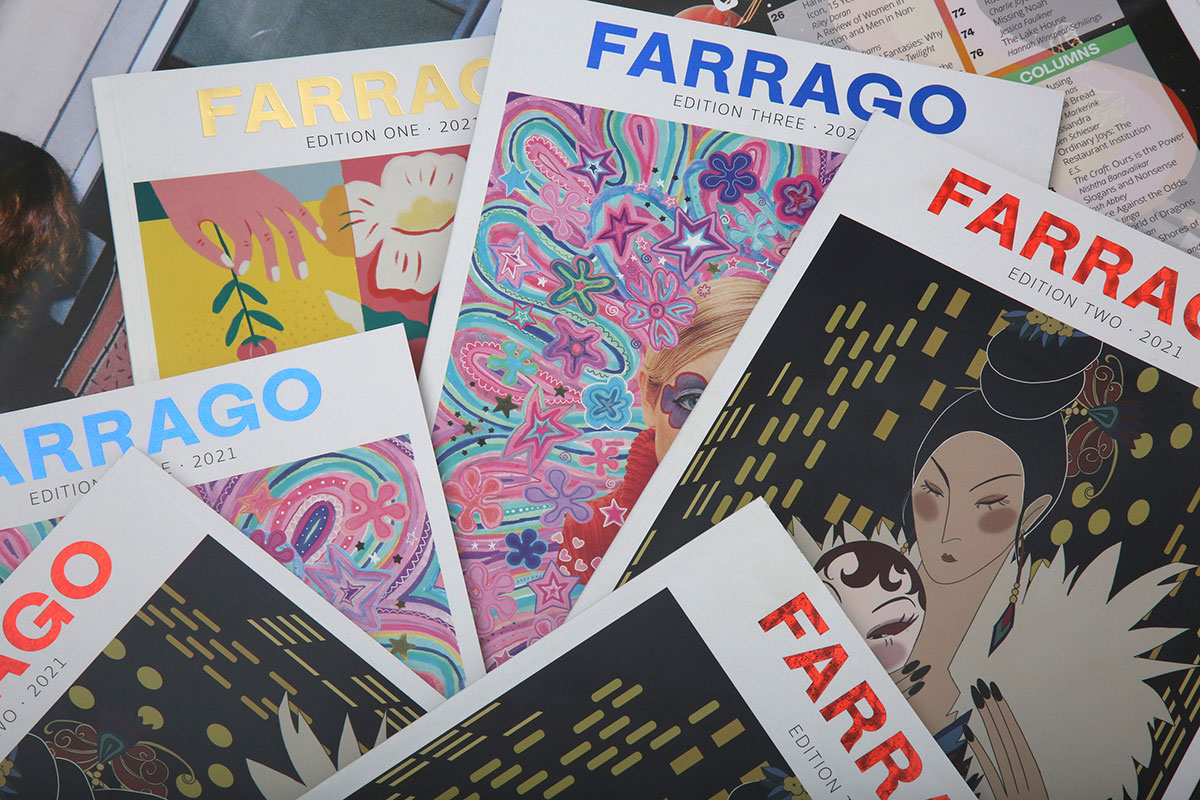You have been lied to.
Honi Soit is not the oldest student newspaper in the country. Farrago is.
Welcome to a new Honi series where I spotlight a student media publication from around Australia, to better understand that — believe it or not — there is flourishing student media outside Honi Soit and it is worth knowing about.
Farrago is the University of Melbourne’s student magazine, founded in 1925 by two students, Randal Haymanson and Brian Fitzpatrick. It has been a mainstay of student journalism, intercampus activism and Melbourne culture ever since. Farrago has an impressive and diverse history: let’s talk about it.
Farrago is a Latin word meaning “mixed fodder” or a “confused mixture” which was used as an ethos to describe the complexity and diversity of student voices. Some notable past editors of the publication include Nam Le, Christos Tsoikas and Nicola Gobbo.
For context, the idea for this spotlight series came when a fellow Honi editor, Simone Maddison, and I embarked on the gruelling task of covering the National Convention of Students in Ballarat late last year. Those four days can be likened to the Tenth Circle of Hell but here, born from student media camaraderie and companionship, came the desire to learn more about what lives beyond the dungeons of the Wentworth Honi office.
At the conference I met Joel Duggan. Joel graduated last year from the University of Melbourne with a Bachelor of Arts majoring in creative writing and politics and is one of Farrago’s 2024 news editors. Joel has been a consistent contributor to the paper since 2021, with experience ranging from creative writing to news reporting. Recently, I reached out and had the opportunity to interview him to better understand Farrago’s prominent position in Australian student media.
Upon a friendly Zoom greeting, Joel explained Farrago’s story and his journey becoming its 2024 news editor.
First, I asked Joel how Farrago came to be.
Joel said, “a lot of people think that there was, like, some crazy birth story, but it’s just, like, a couple kids that were, like, waiting to be counter-cultural” — an impetus akin to Honi.
Now technically we did not lie to you as I led with before.
Although Farrago was first published in 1925 — four years before Honi Soit — their publication history is far from linear, starting off as a weekly broadsheet paper Farrago, then changing to a monthly magazine and then finally switching to a periodical magazine in the early 2000s due to financial and structural circumstances. Therefore, Farrago retains their ‘first publication’ status but loses its weekly one.
Unlike Honi’s ticket of roughly ten members, Farrago’s editorial team is comprised of four main roles: news editor, design editor, non-fiction editor and creative fiction editor. Joel grew interested in 2021 when he became a creative fiction sub editor but found momentum reporting on student activism especially in areas related to the NTEU and VSU.
When discussing the “golden age” of Farrago, Joel said “the 60s and 70s were, arguably in line with Honi, the cementers of our legacy” and went on to say that “if you adjust for inflation we were roughly allocated $280,000 per year” at that time.
Both Farrago and Honi Soit were staunch student papers memorable for covering anti-Vietnam War protests, women’s liberation movements and, of course, counterculture.
Today, Joel describes the magazine as a “creative outlet” with regular creative writing and design submissions as a recent popularity but felt that news and coverage of student activism is “needed and relevant to students”.
Unfortunately Farrago’s budget has been less than kind to their contemporary format. In 2020, Farrago was forced to reduce their magazine releases from eight to six due to COVID and budget cuts. And this year, the team have been moved to cancel their annual creative writing competition, “Above Water”, on similar grounds.
After concluding discussions about changing student opinions on our respective publications, Joel said, “I know this to be a bit self critical [but] we’re not like the cornerstone that we once were.”
I wondered what the future holds for Farrago’s already oscillating history and if the “golden age” of both of our papers could ever be revived again.
I tried comforting this rumination, assuring Joel and subconsciously myself, that budget cuts and lack of institutional support is an unfortunate but survivable inevitability of counter-cultural journalism. But I didn’t reach a conclusion worth sharing, because the student media landscape is indescribably valuable to university culture at best, underfunded at worst and worth picking up a copy no matter where the scale tips.
Read Farrago here and support a student paper near you.





